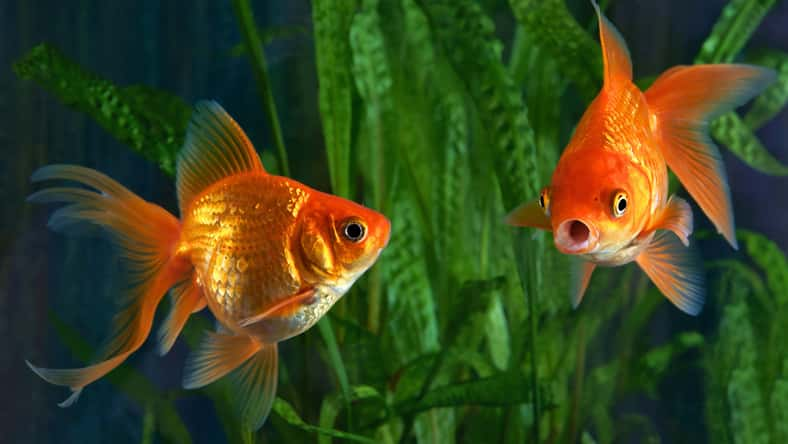Before You Bring Home A Goldfish, It’s Important To Know The Common Diseases That Affect This Popular Pet

It’s easy to see why goldfish are one of the most popular pets around. They don’t make messes in your home, and it’s relaxing to watch them swim with their graceful movements. Goldfish will usually thrive in a tank that is maintained properly, but even then, they still run the risk of getting sick.
There are a variety of diseases that can affect their health and longevity. It’s essential to understand what illnesses that goldfish can catch so you can provide the best care possible for your beloved pet. Here is a brief guide on a few common goldfish diseases and how to treat and prevent them.
Goldfish Ich Disease
The ich parasite is the most common parasite found in fish tanks. Its presence may cause white spots to show up on a goldfish’s fins and body. Your goldfish may also appear to be rapidly breathing and rub itself on gravel or aquarium decorations.
The parasite can come about when the water temperature experiences a sudden drop. This can be caused by a malfunctioning heater, adding cold water to the tank, or introducing new fish to the aquarium.
The parasite is highly contagious, so it’s necessary to treat the whole aquarium. If the parasite is present in the water, it can be killed if the water temperature is raised to 80 degrees Fahrenheit. Then, add methylene blue or malachite green. Put the affected fish in a bath of aquarium salt, adding three teaspoons per gallon. Every 12 hours for 14 days, reduce the salt concentration.
Swim Bladder Disease
The swim bladder helps fish control their buoyancy. When the organ stops functioning properly, you might notice your fish swimming sideways, upside down, or at the bottom of the tank. There are multiple causes of swim bladder disease, including constipation, environmental issues, swallowed air, bacterial/fungal infections, and kidney/liver problems.
If you notice that your fish is suffering from swim bladder disease, check the water quality and change 25 percent of it. You can also try to refrain from feeding your fish for 48 hours. Or you can feed it one to two shelled peas per day to help relieve constipation. If you feed your fish flakes, soften the flakes first.

Mirek Kijewski – stock.adobe.com – illustrative purposes only, not the actual fish
Popeye Disease
Popeye disease is typically a sign of an underlying health issue. It occurs when fluids build up behind or in the eye. This causes the fish’s eyes to look like they’re popping out of their sockets. If your fish’s eyes appear enlarged in this manner, remove any sharp objects from the tank and isolate them from any aggressive fish.
The problem could be a bacterial infection. Change 30 to 50 percent of the water in the aquarium and treat it with an antibacterial solution. Other causes of the disease are fights between fish and poor water quality.
Bacterial Infections
After parasites, bacterial infections are the most common ailment that goldfish suffer from. Signs of a bacterial infection are cloudy eyes, bleeding, open wounds, white film on the fins or body, and ulcers on the head.
The main cause of bacterial infections is prolonged exposure to dirty water. Such an environment can weaken your fish’s immune system and make it more susceptible to developing infections. A low-quality diet can make your fish sick as well. Antibiotics are needed to cure the infection. You can get a prescription from your veterinarian.
Fungal Infections
When a fungal infection is present, fish will have fuzzy or cottony spots on their bodies. Fortunately, fungal infections are not contagious and are not as common as bacterial infections or parasites. But they do call for immediate medical attention. Generally, they are caused by infected food, poor water quality, or open wounds. A prescription for antifungal drugs from your veterinarian will be needed.
Sign up for Chip Chick’s newsletter and get stories like this delivered to your inbox.
More About:Animals